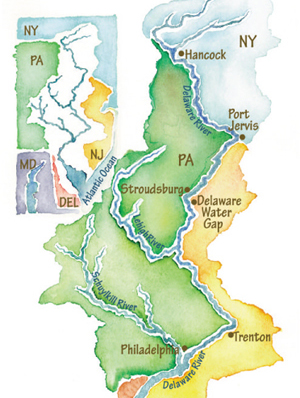Delaware Riverkeeper Maya K. van Rossum always knew 45 feet was a stopping point on the way down to 50. As head of the Delaware Riverkeeper Network, she led a three-decade battle against the Port of Philadelphia’s plan to deepen the Delaware River’s main shipping channel. Despite environmental concerns and a lengthy lawsuit, the project
MoreSeveral weeks have passed since Philadelphia was in a panic over the specter of contaminated drinking water. But while concerns over the March 25 chemical spill at a Trinseo Altuglas plant in Bristol have faded into yesterday’s news, hazards still swirl for both people and animals in Lower Bucks County. In an email to Grid,
MoreMrs. Brenda Whitfield moved to Eastwick over 40 years ago and settled in a house at the edge of the neighborhood, near the confluence of Cobbs Creek and Darby Creek. At the time she had one daughter and was expecting another. A third followed a year later. Whitfield says there were no fences to stop
MoreThe 2019 PES oil refinery explosion in South Philadelphia opened the door for a brighter future after more than a century of fossil fuel pollution. But four years later, many questions remain unanswered by new owner Hilco Redevelopment Partners. In September 2019 I plopped into a kayak and pushed off the eastern banks of the
MoreTraces of panic on the streets of Philadelphia. On my bike ride home from work I count no fewer than three people carrying cases of bottled water. Near Drexel’s campus I overhear a student who appears to be an undergrad saying she’s called four food delivery services before finally finding someone who could bring some
MoreIf there’s one thing all Philadelphia’s mayoral candidates can agree on, it’s that Mayor Jim Kenney botched the water crisis that wasn’t. On the heels of a near-crisis that called into question Kenney’s emergency response and the City’s ability to protect its drinking water system, the candidates to succeed Kenney in office gathered Wednesday night
MoreLet’s rewind. This past Sunday afternoon, iPhone sirens blared and the following message flashed across the screen of hundreds of thousands of Philadelphians: “City of Phila recommends using bottled drinking water from 2PM 3/26/2023 until further notice for all Phila Water Department customers. Contaminants have not been found in the system at this time but
MoreThe U.S. Environmental Protection Agency (EPA) has proposed limits on six per- and polyfluoroalkyl substances (PFAS) in drinking water. If enacted, these limits would require public drinking water utilities to reduce the levels of these chemicals, which have been linked to cancers and other illnesses. The EPA published voluntary limits for some PFAS in June
MoreDwayne Wharton was tasked with helping to solve one health care crisis affecting kids when he discovered another. Wharton was working for The Food Trust in the mid-2010s, and that organization’s goal was to reduce the number of sugary beverages, especially soda, kids were drinking. They encouraged students to drink more water from the ubiquitous
MoreThree Philadelphia Water Department (PWD) trash skimming boats ply the waters of the Delaware and Schuylkill rivers, floating goalkeepers trying to prevent plastic debris from reaching the ocean. The current circulating around the North Atlantic leaves a quiet section of ocean in the middle called a gyre. A patch of plastic garbage hundreds of miles
MoreThe Cobbs Creek Foundation’s creek restoration plans received a $3.5 million boost in state funds from the Redevelopment Assistance Capital Project (RACP) grant program in November. The RACP program funds “the acquisition and construction of regional economic, cultural, civic, recreational, and historical improvement projects,” according to its website. In a minor win for neighborhood advocates
More











